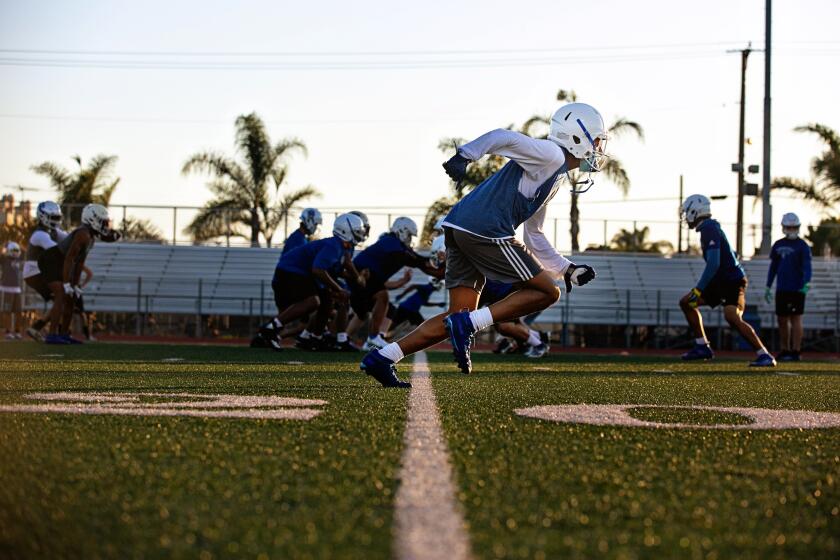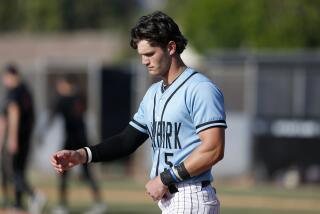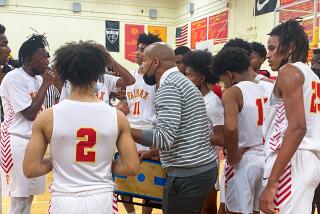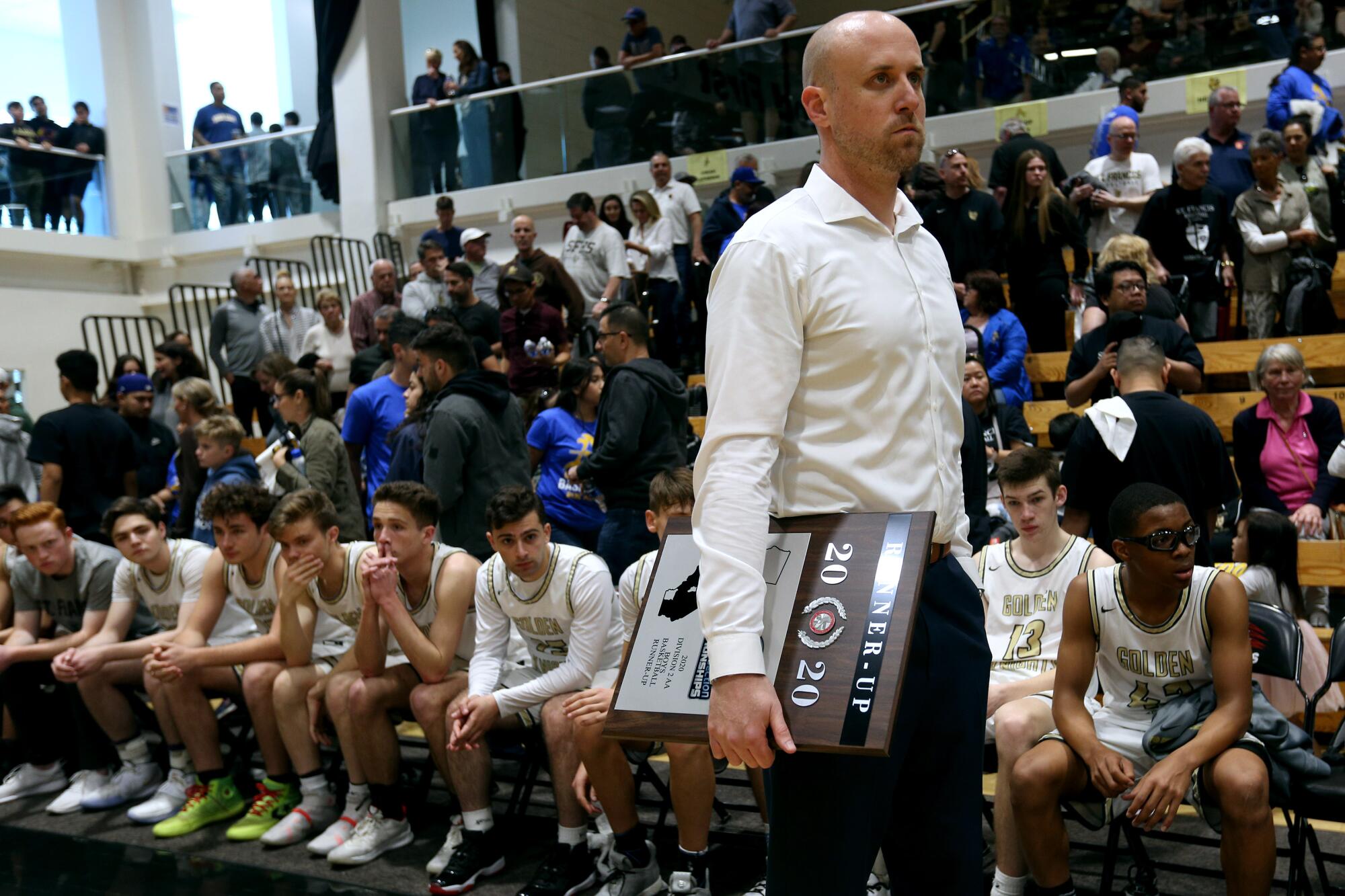
- Share via
Todd Wolfson, the boys’ basketball coach for La Cañada St. Francis High, was getting ready to watch the Sacramento Kings play the New Orleans Pelicans on television the night before his team was scheduled to drive to the capital to play for a state championship at Golden 1 Center.
It was March 11, 2020.
“I’m watching them getting pulled off the court,” Wolfson said. “I’m thinking, ‘There’s no way we can play in a place they can’t play in.’”
The Kings-Pelicans matchup was the second NBA game postponed that night after Utah center Rudy Gobert tested positive for the coronavirus before the Jazz-Thunder game in Oklahoma City. The NBA would soon suspend its season because of the coronavirus outbreak.
The next morning, while loading the school vans with his players to travel to play Stockton Weston Ranch, Wolfson received a phone call from his athletic director informing him the state championships had been canceled. He got the players together to tell them the news. There were tears, disappointment and anger.
“You’re with those kids so long. We had written on a white board back in November, ‘Win a state title.’ It was our goal and it was becoming a reality,” Wolfson said. “… We haven’t played a game since.”
High school sports throughout California were shut down a week later. Fields were closed. Gyms and weight rooms were locked. Campuses were empty as classes were moved online. Families whose lives revolved around youth sports were left confused and uncertain about the future.
“We had no idea,” Wolfson said. “We were thinking about ourselves. We didn’t know this was going to be anything like this. I was telling our guys we had a chance to be back in a few weeks.”
Weeks turned into months. Deaths from the pandemic would exceed 500,000 nationwide by February 2021. The impact of an 11-month shutdown for youth sports in California changed lives in ways few could imagine.
The World Health Organization announced the coronavirus outbreak had become a pandemic on March 11, 2020. Since then, the virus has seemingly touched all aspects of life in Southern California and beyond. The Times looks back on a full year of life in a pandemic.
At first, there was hoarding and empty shelves for toilet paper, hand sanitizer and spaghetti sauce. Internet access and reliability became more valuable than a pair of Nike shoes. Schools handed out laptops instead of books. Zoom, a new way to communicate via video, became a must-learn tool for teachers, students and coaches.
By April and May, the class of 2020 realized there would be no senior-year activities at their schools. Those with college ambitions either could mope and wallow in sorrow or figure out ways to move forward on their own.
Sixty-four seniors were featured in a Los Angeles Times series entitled “Season Interrupted.”
“Never take anything for granted,” San Pedro High pitcher Travis Connelly said of losing an integral part of his life during one of the first interviews. “You never know when your last workout or last practice will be. Always put in 110%.”
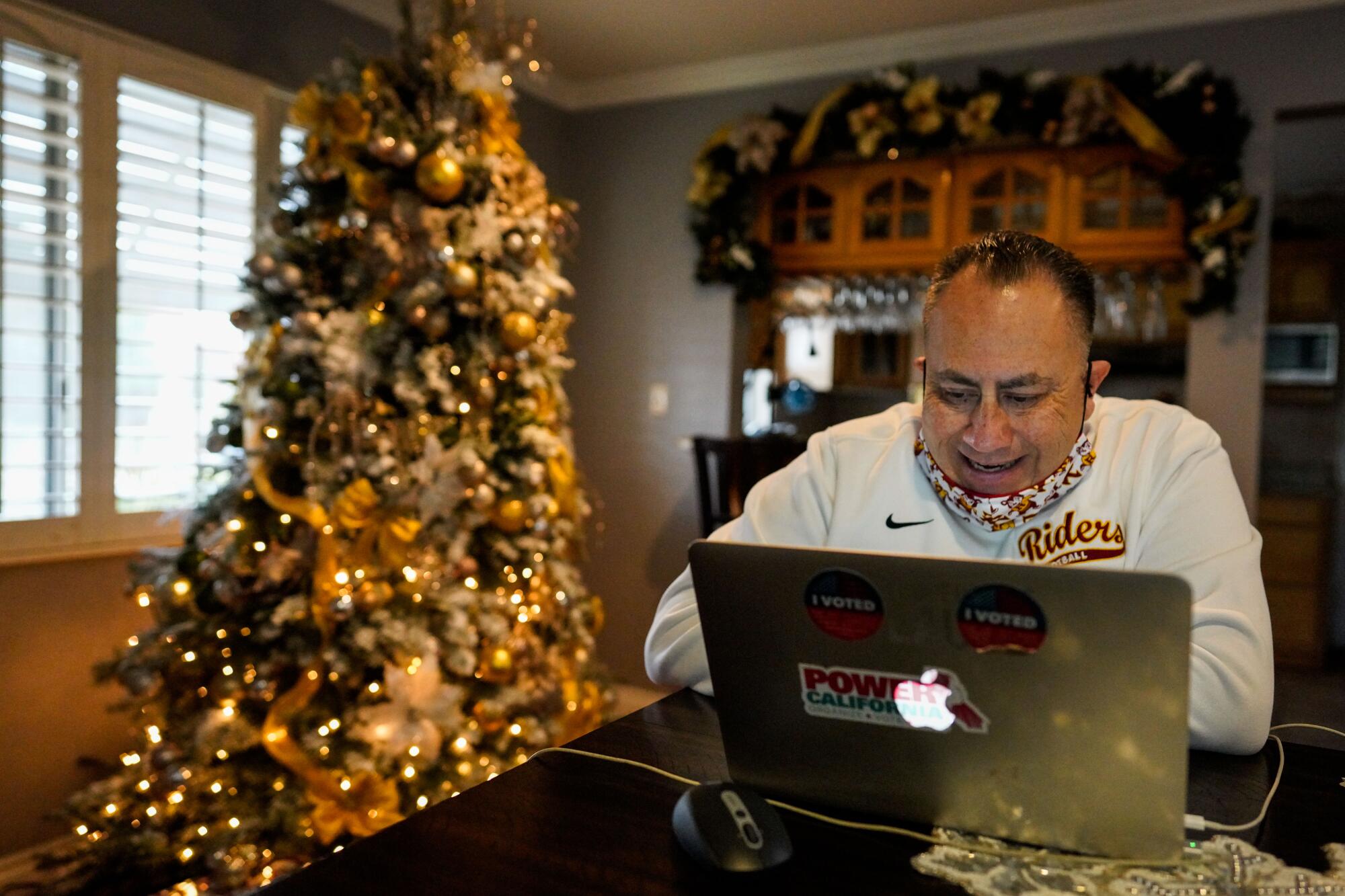
That sentiment would be repeated by most of the athletes featured in the “Season Interrupted” series.
With hours of free time away from sports, youths discovered new interests, from cooking to surfing, from camping to drawing. They kept training, doing push-ups in their bedrooms, running laps at parks, throwing balls against garage doors.
Families were thrown into turmoil by COVID-19.
Jennifer Soto, a lacrosse player from Downey, was accepted to UCLA on March 20. Her foster father died eight days later of COVID-19.
Mekhi Evans-Bey, a football player from Culver City, became the caregiver for his mother after she contracted the coronavirus. “It’s changed me,” he said. “I was nervous. She got better, but at the time, it was rough.”
Get our high school sports newsletter
Prep Rally is devoted to the SoCal high school sports experience, bringing you scores, stories and a behind-the-scenes look at what makes prep sports so popular.
You may occasionally receive promotional content from the Los Angeles Times.
By summer, the lockdown led to disagreement and debate. Do you need to wear a mask? Is it safe to play outside basketball? Will there be a football season in the fall?
Other states were allowing club sports to continue. Southern California parents started traveling with their sons and daughters for softball, basketball, soccer, baseball and football competitions in Arizona, Texas, Utah and Georgia.
Athletes and their families improvised. Nico Ponce, a point guard at Mission Hills Bishop Alemany, trained on his outside purple-and-gold court in the backyard or went into the three-car garage to lift weights. Chris Giron, a football player at Woodland Hills Taft, started lifting milk containers filled with eight pounds of water from his third-floor apartment balcony.
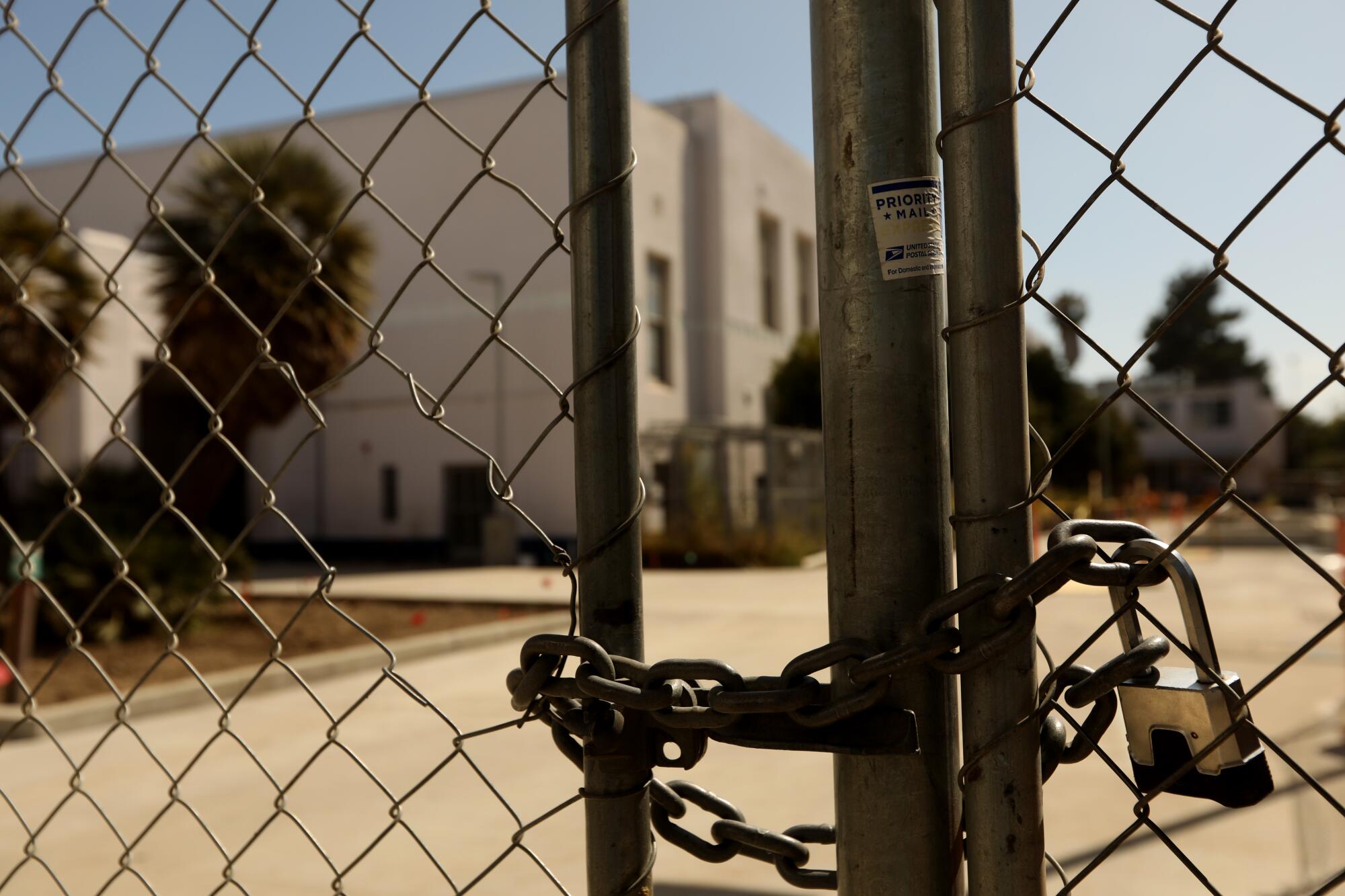
On July 30, when the CIF announced the fall sports season would be delayed until December, some families made the decision to leave California to play football elsewhere. Jake Garcia, the star quarterback at Harbor City Narbonne who had transferred to La Habra, left for Georgia. He’d win a state title and sign with Miami.
Parents entered panic mode because the college dead period, when recruiters can’t leave campuses to visit recruits and high school athletes can’t visit colleges, kept getting extended. There was a feeling California high school athletes would lose out on scholarships because there were no games to showcase their talents.
While some schools and teams were allowed to begin conditioning, new state safety protocols and restrictions prevented full-fledged practices from taking place. A colored tier system was introduced by the California Department of Public Health on COVID-19 transmission — purple, red, orange and yellow. N95 masks, infrared thermometers and hand sanitizer became must-have items for practices.
While most high schools followed the guidelines, club programs revolted, with volleyball, basketball, soccer, softball and baseball games continuing. An 11-on-11 club football league was created in the Inland Empire.
On Aug. 15, one of the hottest days of the year, Shane Thomas, a promising soccer player from Palisades, drove to a park in Chino to work out with his club soccer team. The temperature reached 111 degrees. The 17-year-old was found unresponsive 400 yards away from the field after practice and pronounced dead at a local hospital. The San Bernardino County coroner continues to investigate the cause of death.
“I’m pleading and begging with them to petition to make a rule,” Thomas’ father, John, said at the time. “I would love for it to be the Shane Thomas rule. We don’t want to place blame. But [the heat] was a clear, possible factor.”
Looking back at the COVID-19 pandemic shutdown for high school sports with a year of tweets.
Concern for the mental health of athletes moved front and center. A Santa Margarita golfer and basketball player took his own life in September. Coaches reported they were having trouble motivating athletes to focus on their grades. Others were having family issues while spending so much time at home.
A turning point for youth sports came Dec. 20. It was the day San Mateo Serra football coach Patrick Walsh and Torrey Pines football coach Ron Gladnick decided they needed to act to try to rescue high school sports as a new surge of coronavirus cases was underway. They formed the Golden State HSFB Coaches Community.
“None of us knew what we were doing in the beginning,” Gladnick said.
They organized coaches and compiled research from other states to prove sports could be played safely. A parent-driven Facebook group, Let Them Play Ca., was formed. Data was collected and a campaign begun to make sure politicians were paying attention to the plight of teenagers stuck at home on computers and prohibited from playing sports.
In January the groups captured the attention of Gov. Gavin Newsom. On Jan. 25, after negotiations and compromise, the state announced new youth sports guidelines that allowed several outdoor sports to resume. The first cross-country meet was soon held.
On Feb. 19, Newsom announced the return of football and other outdoor contact sports for counties that reached a threshold of adjusted COVID-19 cases of 14.0 per 100,000 population. Weekly testing would be required for football and water polo athletes and coaches.
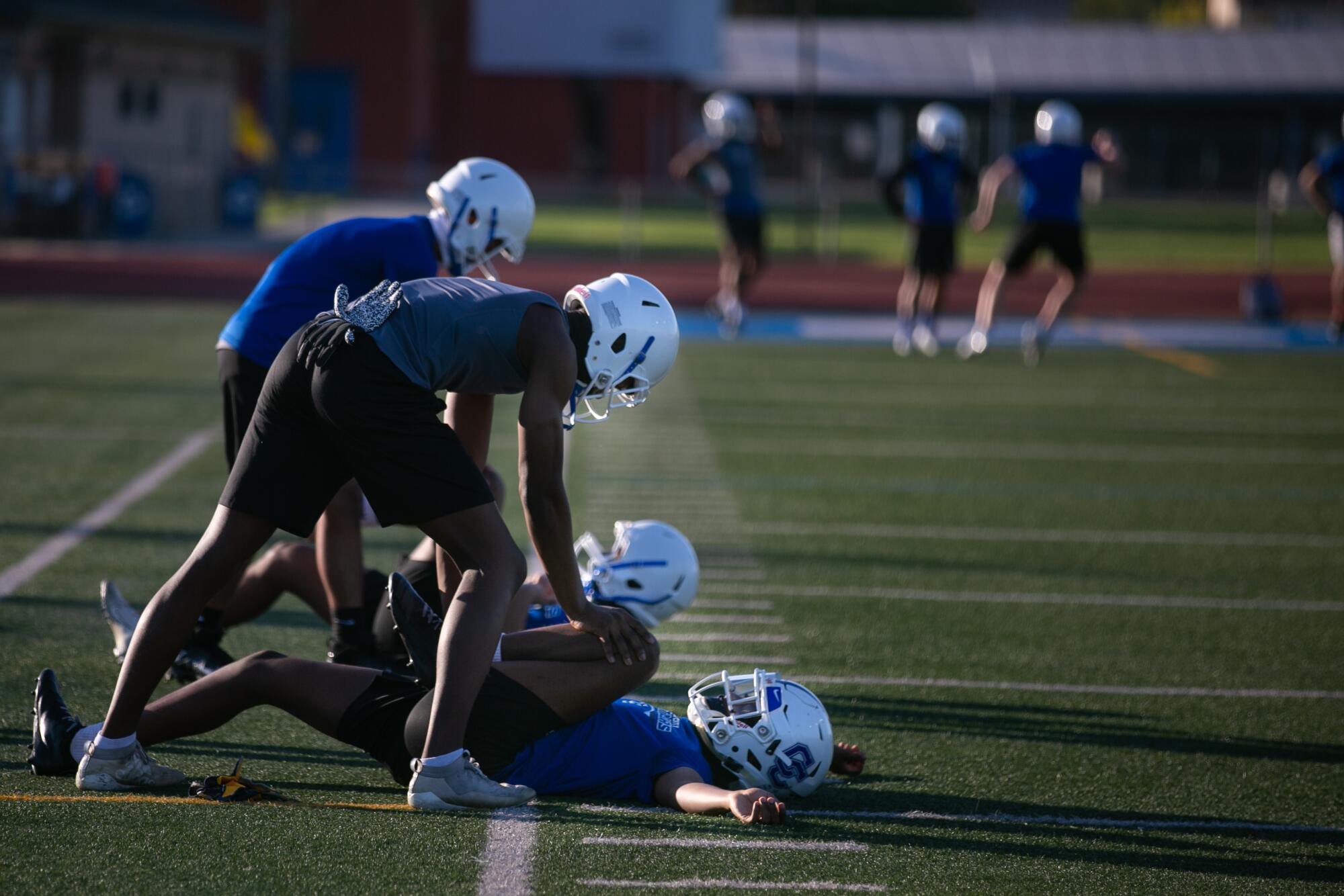
The state was forced back into negotiations in February after a Superior Court judge granted a temporary restraining order in a lawsuit against the restrictive youth sports guidelines in San Diego County. The judge ruled youth sports should be able to resume if organizers followed the same guidelines that allowed the return of pro and college sports.
Then, on March 4, it was announced the state had reached agreement with the plaintiffs’ lawyers to allow all sports to resume in California with new guidelines and enhanced testing procedures.
Walsh called it a “historical day” for the state of California.
“This is a journey that is one for the history books,” he said. “Something magical happened for the kids.”
Wolfson said he wants to call Weston Ranch to finally play the state championship game that was canceled last March.
“We didn’t know it was going to be a year,” he said.
More to Read
Get our high school sports newsletter
Prep Rally is devoted to the SoCal high school sports experience, bringing you scores, stories and a behind-the-scenes look at what makes prep sports so popular.
You may occasionally receive promotional content from the Los Angeles Times.


